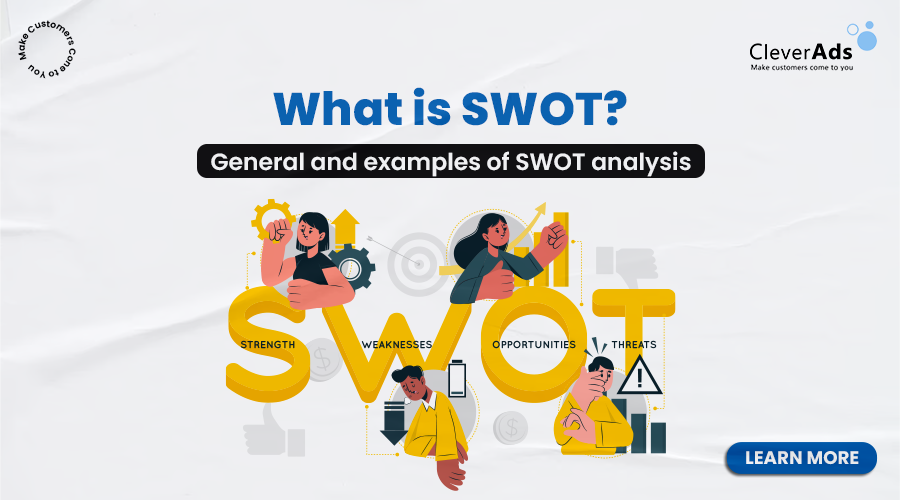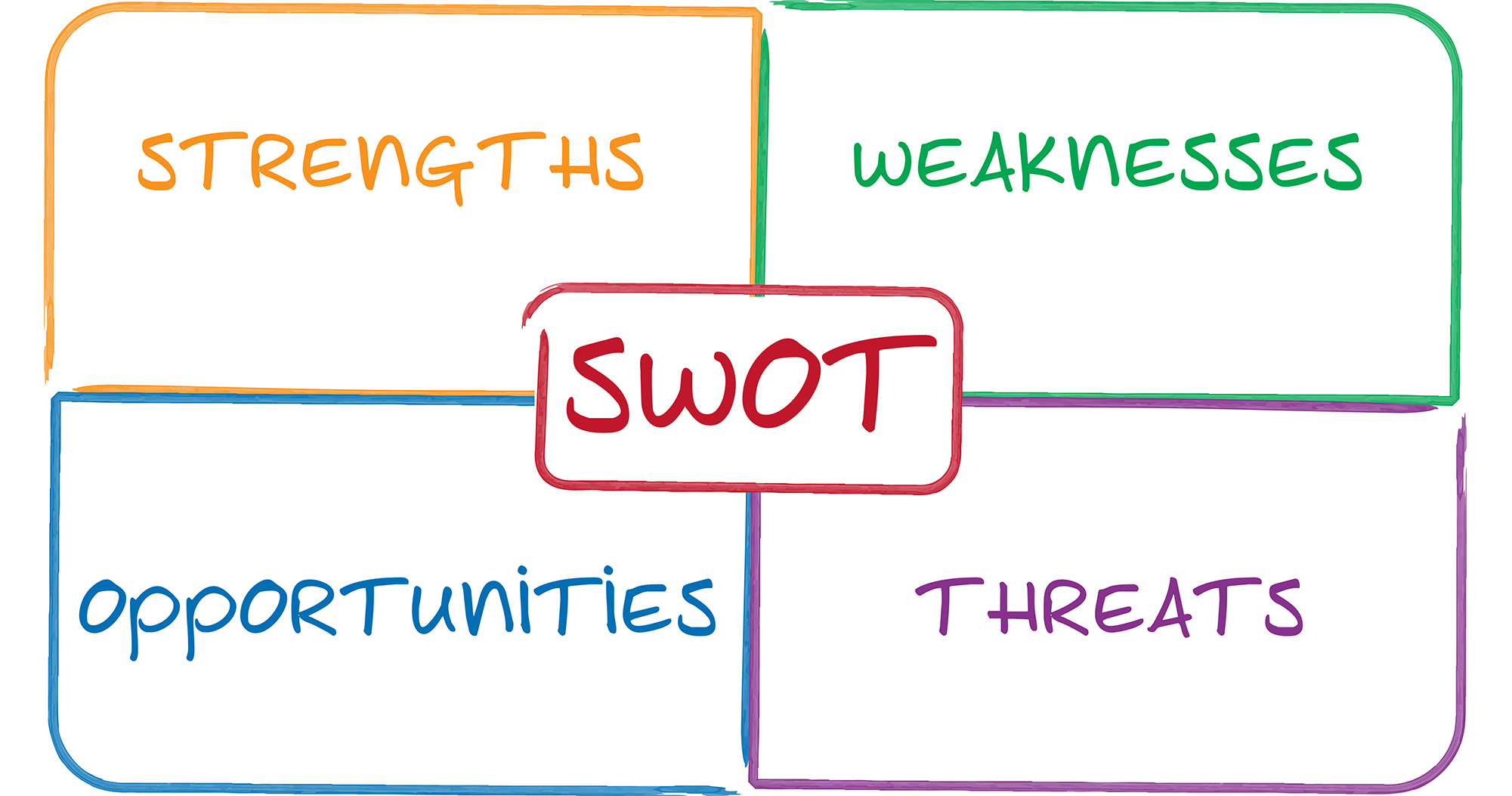What is SWOT? General and example of SWOT analysis

What is SWOT? A framework for understanding and analyzing a business’ Strengths, Weaknesses, Opportunities, and Threats. SWOT is considered one of the most useful tools available for strategic planning and business analysis.
1. What is SWOT?
SWOT stands for S – Strength, W – Weakness, O – Opportunity, and T – Threat. A SWOT analysis is a framework that helps assess and understand the internal and external resources that can create an opportunity or risk for an organization.
Strengths and weaknesses are internal factors. They are characteristics of a business that give it a relative advantage (or disadvantage) over its competitors.
On the other hand, opportunities and threats are external factors. Opportunities are factors of the external environment that management can capture to improve business performance (such as revenue growth or profit margin improvement).
Challenges are factors of the external environment that may interfere with a company’s competitive advantage(s) or even its ability to function as a constant concern (think of regulatory or technological disruption).”
2. What is the main component of the SWOT model?
Strengths
Strength can be any area or characteristic in which a business excels and has a competitive advantage over its peers. The advantages can be more qualitative and therefore difficult to measure (like corporate culture, strong brands, proprietary technologies, etc.) or they can be quantitative (like best profit margins) segment, above-average inventory turnover, return on equity, etc.).
Weaknesses
Weaknesses are areas or characteristics where a business has a competitive disadvantage compared to its peers. Like strengths, they can also be more qualitative or quantitative. Examples include inexperienced management, high employee turnover, low (or declining) profit margins, and the use of high (or excessive) debt as a source of funding.
Opportunities
The “Opportunities” section should highlight external factors that represent potential areas of growth or improvement for a business. Consider opportunities such as an overview of evolving market trends, technological advancements that can help improve efficiency, or changes in social norms that are creating new markets or new sub-segments of the business. current market.
Threats
Challenges are external forces that pose risks to the business and its ability to operate. Categories tend to be similar to the “Opportunities” section but in opposite directions. Consider examples: an industry is in decline, technological innovation may disrupt existing business, or social norms are making existing products less attractive to digital consumers. increasing number of consumers.”
3. Importance of SWOT model in Marketing Strategy
SWOT is used to help assess the internal and external factors that contribute to a company’s relative advantages and disadvantages. SWOT analysis is often used in conjunction with other assessment frameworks, such as PESTEL and Porter-5-Forces. Findings from the SWOT analysis will help provide business model assumptions for the business.

Read more: What is Tourism Marketing? Everything marketers need to know
4. What is the purpose of a SWOT analysis?
Different stakeholders use SWOT analysis in different ways.
For example, a management team would use the framework to support strategic planning and risk management. SWOT helps them visualize the relative advantages and disadvantages of the company to better understand where and how the organization should allocate resources, towards growth initiatives or to reduce risks.
On the other hand, the analyst can understand (and quantify) the strengths, weaknesses, opportunities, and threats to assess the business more broadly.
Consider that findings from a SWOT analysis can help inform model assumptions among analysts. It could be an equity researcher trying to estimate the fair market value of a company’s stock, or a credit analyst looking to better understand the creditworthiness of an investor. borrow.
Overall, the SWOT framework is considered by many to be one of the most useful tools available for strategic planning and business analysis.
5. What is the SWOT analysis method?
A SWOT analysis is rarely completed in isolation. It often serves as part of business analysis. Although an assessment framework, SWOT is also a useful tool to help summarize other findings.
Example: An analyst cannot truly assess a company’s strengths and weaknesses without a thorough understanding of the business and its industry. They may want to leverage other tools and frameworks to do this, including:
- Hax Delta Model – This will help understand competitive positioning.
- Ansoff Matrix – This matrix will help visualize the relative risk of the management team’s growth strategies.
- Financial Ratio Analysis – This will help identify trends (year-over-year), as well as the company’s relative performance (using benchmarking data).
- The same is true for external factors – opportunities and threats. These are nearly impossible to understand without first considering:
- Industry Life Cycle – Is the business in a growing, maturing, or declining industry? This presents both opportunities and threats.
- Analysis of the broader business environment or the industry itself – Think of frameworks like PEST or Porter’s 5 Forces.
6. Conclusion What is the SWOT?
Above is the entire summary of the SWOT analysis for small and medium businesses. Hopefully, the information and examples about Vietnam Airlines will help you better understand how to create a SWOT analysis matrix and an appropriate business improvement strategy. Good luck!




